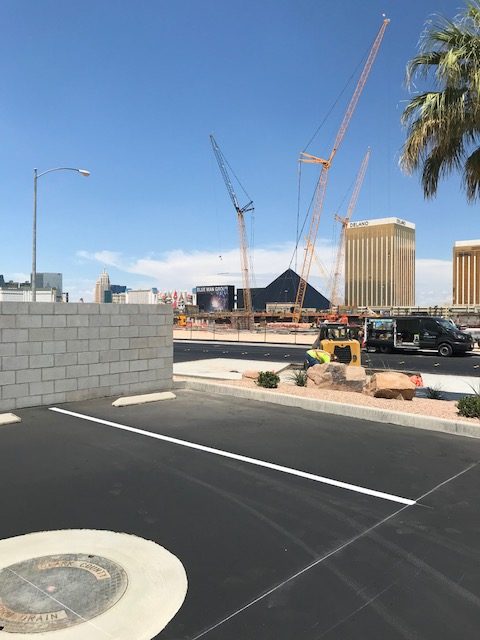
Will Sealcoating Repair Alligator Cracking?
 Sealcoats are great products that can extend the life of your asphalt pavement, cover insignificant flaws, and restore faded asphalt to its original dark color. However, sealcoats cannot repair alligator cracking. To explore the reasons why it cannot, it might be helpful to review what sealcoating and alligator cracking are and are not.
Sealcoats are great products that can extend the life of your asphalt pavement, cover insignificant flaws, and restore faded asphalt to its original dark color. However, sealcoats cannot repair alligator cracking. To explore the reasons why it cannot, it might be helpful to review what sealcoating and alligator cracking are and are not.
What Is Sealcoating?
A seal coat is a mixture that contractors apply to asphalt pavements to protect them and enhance their appearance. Seal coats are not repair products; they are a type of preventive maintenance product that offers some cosmetic benefits. Although it is true that a roadway or parking lot sealcoat can hide hairline cracks, it does not actually repair them. If cracks are wider than the width of a human hair, your contractor will need to use one of the asphalt crack repair methods to close any cracks that are judged significant enough to warrant asphalt crackfilling or crack sealing. When providing estimates for sealcoating parking lots, most contractors include a separate line item that details the costs for repairing any cracks. If the contractor does not repair cracks or potholes, you may need to hire a separate contractor to make the repairs before the sealant can be applied.
What Is Alligator Cracking?
Alligator cracking is a serious form of damage in which a network of cracks link up to create a pattern that is reminiscent of the scales on a reptile’s back. This damage is sometimes referred to as crocodile cracking, fatigue cracking, or alligatored asphalt. Although there are several potential causes of alligator cracking, in virtually all cases, the cause of the damage can be traced to the foundation that supports the pavement. The foundation damage starts when a break in the pavement is left open to the elements. Water, dirt, automotive fluids, and other contaminants enter through the break, then work their way through the entire structure, inflicting damage as they go. Eventually, moisture reaches the base layers and begins to erode them. The foundation weakens and becomes destabilized, allowing the pavement to sag over the damaged area. Before long, alligator cracking begins, and it can expand rapidly. Typically, the only way to repair alligator cracking is to remove the damaged pavement, repair the foundation, and repave the area.
If Sealcoating Is Applied Over an Area of Alligator Cracking, What Will Happen?
There are two outcomes that will happen if you apply a seal coat over any type of unrepaired pavement break, and you are unlikely to be happy with either outcome.
1. You just wasted all or part of the cost of your asphalt sealcoating. The sealant is applied as a liquid, so it will just drain into the crack or other break and be lost. If you have an older pavement with numerous cracks or alligatored areas, only a small part of your pavement may receive adequate protection from the sealant.
2. Since the cracks are left open, they will continue to expand, evolving into potholes and more alligator cracking. The cycle continues at a rapid pace, and it will not take long before your entire pavement needs to be completely rebuilt.
At Affordable Striping & Sealing, we know that the best way to handle alligator cracking is to prevent it from happening. We offer the services you need to accomplish that task, including asphalt crack repair, parking lot striping, asphalt sealcoating, and parking lot maintenance programs. We also offer parking lot design, traffic sign installation, road markings, bumper blocks, and pavement markings. We are known for our exceptional work, honesty, exemplary customer service, and professionalism. We would be happy to provide you with a free quote if you will furnish us with a little information about your paving-related needs. You can call 702-222-9009, complete our online request form, or send an email to Estimating@AffordableStriping.com.



